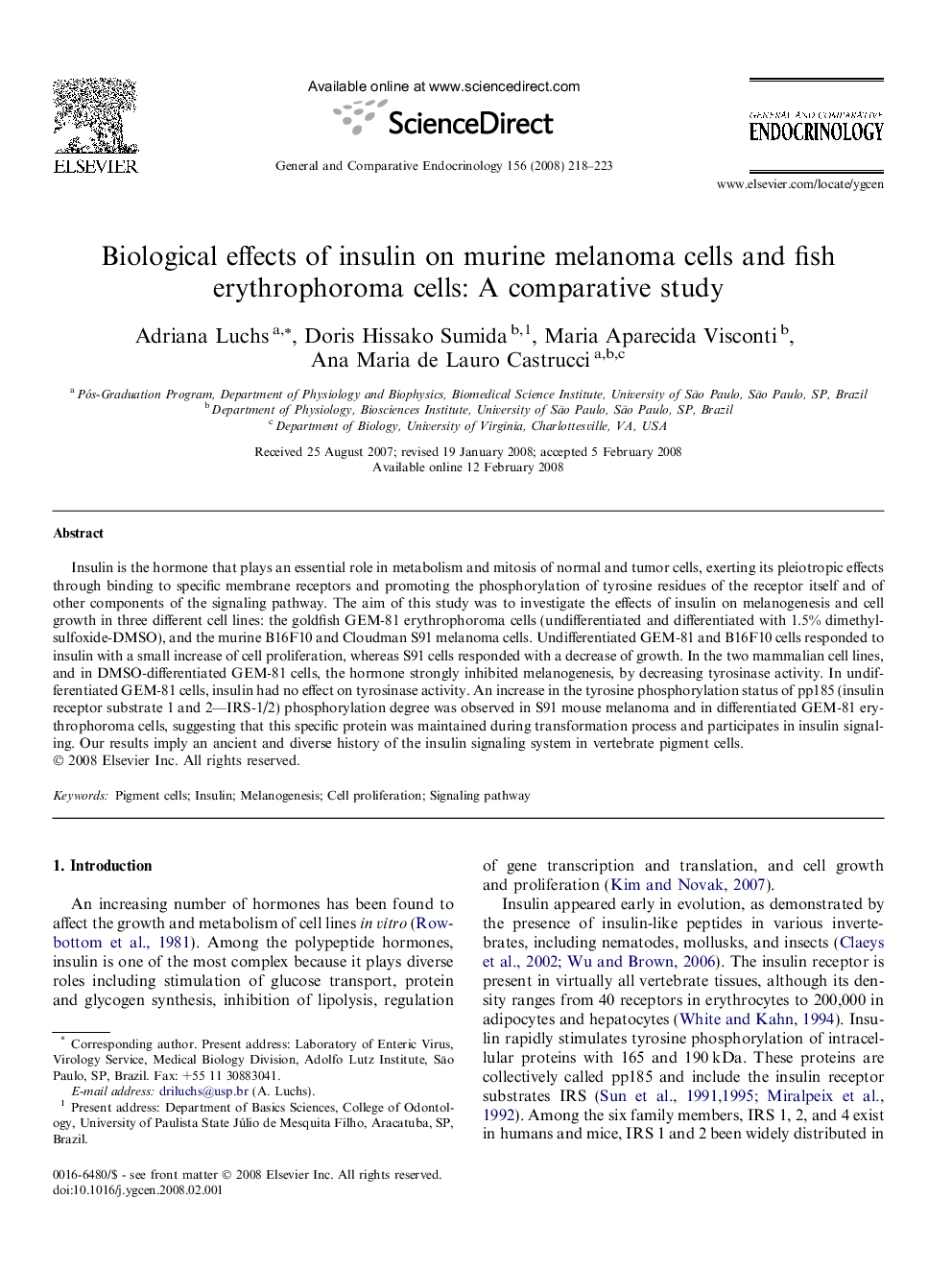| Article ID | Journal | Published Year | Pages | File Type |
|---|---|---|---|---|
| 2801640 | General and Comparative Endocrinology | 2008 | 6 Pages |
Insulin is the hormone that plays an essential role in metabolism and mitosis of normal and tumor cells, exerting its pleiotropic effects through binding to specific membrane receptors and promoting the phosphorylation of tyrosine residues of the receptor itself and of other components of the signaling pathway. The aim of this study was to investigate the effects of insulin on melanogenesis and cell growth in three different cell lines: the goldfish GEM-81 erythrophoroma cells (undifferentiated and differentiated with 1.5% dimethylsulfoxide-DMSO), and the murine B16F10 and Cloudman S91 melanoma cells. Undifferentiated GEM-81 and B16F10 cells responded to insulin with a small increase of cell proliferation, whereas S91 cells responded with a decrease of growth. In the two mammalian cell lines, and in DMSO-differentiated GEM-81 cells, the hormone strongly inhibited melanogenesis, by decreasing tyrosinase activity. In undifferentiated GEM-81 cells, insulin had no effect on tyrosinase activity. An increase in the tyrosine phosphorylation status of pp185 (insulin receptor substrate 1 and 2—IRS-1/2) phosphorylation degree was observed in S91 mouse melanoma and in differentiated GEM-81 erythrophoroma cells, suggesting that this specific protein was maintained during transformation process and participates in insulin signaling. Our results imply an ancient and diverse history of the insulin signaling system in vertebrate pigment cells.
